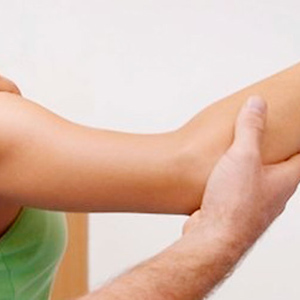Empathy in students of Kinesiology
Keywords:
EMPATHY, STUDENTS, EMOTIONS, GENDER IDENTITY, CHILE.Abstract
Introduction: empathy is an important concept in the interaction between the Kinesiologist and the patient.
Objective: to determine the levels of empathy in students of Kinesiology considering the variables course and gender from the School of Health Sciences, University of Atacama (Chile) in November 2018.
Methods: exploratory and cross-sectional study. A sample of 191 students was included in the study. The Jefferson's Empathy scale was used. The median, quartile 1 and 3, inter-quartile difference and confidence interval of the median were estimated. The possible differences regarding empathy were studied using nonparametric tests (Mood Median).
Results: there were differences in empathy in the course variable. Empathy was not different concerning gender variable.
Conclusions: levels of empathy, along with the levels of interest showed differences between courses and there are no differentiation concerning empathy between genders.
Downloads
References
1. Svenaeus F. The phenomenology of empathy: a Steinianemotionalaccount. PhenomenolGognSci. [Internet] 2016 [citado 20/5/2018]; 15(2): [aprox. 20p.]. Disponible en: http://doi.org/10.1007/s11097-014-9411-x
2. Díaz-Narváez VP, Alonso-Palacio LM, Caro S, Silva M, Arboleda-Castillo J, Bilbao JL, et al. Compassionate Care Component of the Construct Empathy in Medical Students in Colombia and Dominican Republic. Acta Medica Mediterr. [Internet] 2017 [citado 20/5/2018]; 33(1): [aprox. 6p.]. Disponible en: http://doi.org/10.19193/0393-6384_2017_1_018
3. Calzadilla-Núñez A, Díaz-Narváez V, Dávila-Pontón Y, Aguilera-Muñoz J, Fortich-Mesa N, Aparicio-Marenco D, et al. Empathic erosion during medical training according to gender: cross-sectional study. Arch Argent Pediatr. [Internet] 2017 [citado 20/5/2018]; 115(6): [aprox. 5p.]. Disponible en: http://doi.org/10.5546/aap.2017.eng.556
4. Lee Y, Seomun G. Development and validation of an instrument to measure nurses’ compassion competence. ApplNurs Res. [Internet] 2016 [citado 20/5/2018]; 30: [aprox. 8p.]. Disponible en: http://doi.org/10.1016/j.apnr.2015.09.007
5. Hunt PA, Denieffe S, Gooney M. Burnout and its relationship to empathy in nursing: a review of the literatura. J Res Nurs. [Internet] 2017 [citado 20/5/2018]; 22(1-2): [aprox. 15p.]. Disponible en: http://doi.org/10.1177/1744987116678902
6. Larios J, Lobo-García K, Fontalvo-Manga M, Bilbao-Ramirez J, Erazo-Coronado AM, Díaz-Narváez V, et al. Niveles de orientación empática en estudiantes de medicina de la Universidad Metropolitana de Barranquilla (Colombia). Salud Uninorte. [Internet] 2018 [citado 20/5/2018]; 34 (2): [aprox. 8p.]. Disponible en: http://rcientificas.uninorte.edu.co/index.php/salud/article/viewArticle/10598
7. González-Martínez F, Tirado-Amador L, Bueno-Hernández J, Chica-Duque B, Díaz-Narváez VP. Changes in Empathy Levels of Dentistry’s Students of Public University in Cartagena City, Colombia. PesqBrasOdontopedClinIntergr. [Internet] 2018 [citado 20/5/2018]; 18(1): [aprox. 1p.]. Disponible en: http://doi.org/10.4034/PBOCI.2018.181.44
8. UlloqueMJ, Villalba S, Varela de Villalba T, Fantini A, Quintero, Díaz-Narváez VP. Empathy in medical students of Córdoba, Argentina. Arch Argent Pediatr [Internet] 2019 [citado 20/1/2019]; 117(2): [aprox. 5p.]. Disponible en: https://www.researchgate.net/publication/331097112_Empathy_in_medical_students_of_Cordoba_Argentina
9. Díaz-Narváez VP, salas-Alarcón D, Bracho-Milic F, Ocaranza-Ozímica J. Empatía en estudiantes de kinesiología. Universidad Mayor, sede Temuco, Chile. 2015. Rev. Cienc. Salud. [Internet] 2015 [citado 20/1/2019]; 13(3): [aprox. 10p.]. Disponible en: http://doi.org/10.12804/revsalud13.03.2015.05
10. Madera-Anaya M, Tirado-Amador L, González-Martínez F. Factores relacionados con la empatía en estudiantes de Enfermería de la Universidad de Cartagena. Enferm Clínica. [Internet] 2016 [citado 20/1/2019]; 26(5): [aprox. 7p.]. Disponible en: https://www.sciencedirect.com/science/article/pii/S1130862116300626
11. Varela de Villalba T, Ulloque MG, Villalba S, Villalba R, Díaz-Narváez VP. Levels of empathy in dentistry students: measurement and comparison in two academic periods. Universidad Católica de Cordoba (UCC) Argentina. Salud Uninorte. [Internet] 2018 [citado 20/1/2019]; 34 (3): [aprox. 10p.]. Disponible en: http://rcientificas.uninorte.edu.co/index.php/salud/article/viewArticle/10419
12. Díaz-Narváez VP, Estrada-Méndez N, Arévalo-López Y, Calzadilla-Núñez A, Utsman-Abarca R. Empathy, Components of Empathy and Curricular Evaluation of theFaculty of Dentistry, Evangelical University of El Salvador. PesqBrasOdontopedClinIntegr. [Internet] 2017 [citado 20/1/2019]; 17(1): [aprox. 1p.]. Disponible en: http://doi.org/10.4034/PBOCI.2017.171.40
13. Díaz-Narváez VP, Tierra-Chávez DC, Padilla M, Utsman R, Calzadilla-Núñez A. Declinación en el género y la empatía en alumnos de la facultad de odontología de la Universidad Central (Ecuador): Estudio transversal. Rev. Méd. Rosario. [Internet] 2018 [citado 20/1/2019]; 84: [aprox. 11p.]. Disponible en: http://www.circulomedicorosario.org/Upload/Directos/Revista/5ec7aeDi%C3%ACaz-Narva%C3%ACez.pdf
14. Aparicio DE, Ramosa AE, Mendoza J, Utsman-Abarca R, Calzadilla-Núñez A, Díaz-Narváez VP. Levels of empathy, empathy decline and differences between genders in medical students of Cartagena (Colombia). [Internet] En la prensa; 2019 [citado 20/1/2019]. Disponible en: http://doi.org/10.1016/j.edumed.2018.06.004
15. Padilla M, Utsman R, Díaz-Narváez V. Changes in the decline on empathy levels of dental students in Costa Rica. Rev Port Estomatol Med Dent Cir Maxilofac. [Internet] 2017 [citado 20/1/2019]; 58(1): [aprox. 5p.]. Disponible en: http://doi.org/10.24873/j.rpemd.2017.05.009

Published
How to Cite
Issue
Section
License
Authors who have publications with this journal agree to the following terms: Authors will retain their copyrights and grant the journal the right of first publication of their work, which will be publication of their work, which will be simultaneously subject to the Creative Commons Attribution License (CC-BY-NC 4.0) that allows third parties to share the work as long as its author and first publication in this journal are indicated.
Authors may adopt other non-exclusive license agreements for distribution of the published version of the work (e.g.: deposit it in an institutional telematic archive or publish it in a volume). Likewise, and according to the recommendations of the Medical Sciences Editorial (ECIMED), authors must declare in each article their contribution according to the CRediT taxonomy (contributor roles). This taxonomy includes 14 roles, which can be used to represent the tasks typically performed by contributors in scientific academic production. It should be consulted in monograph) whenever initial publication in this journal is indicated. Authors are allowed and encouraged to disseminate their work through the Internet (e.g., in institutional telematic archives or on their web page) before and during the submission process, which may produce interesting exchanges and increase citations of the published work. (See The effect of open access). https://casrai.org/credit/


